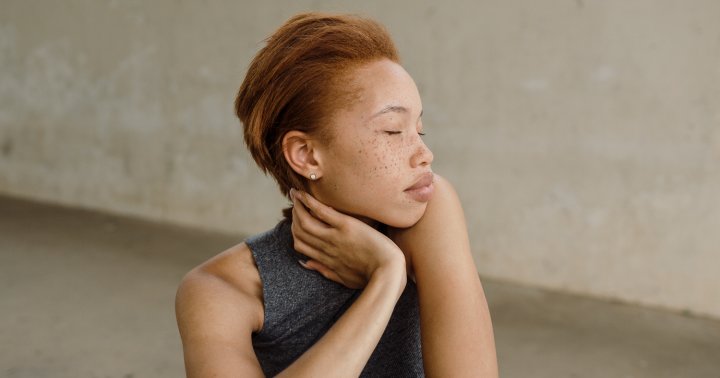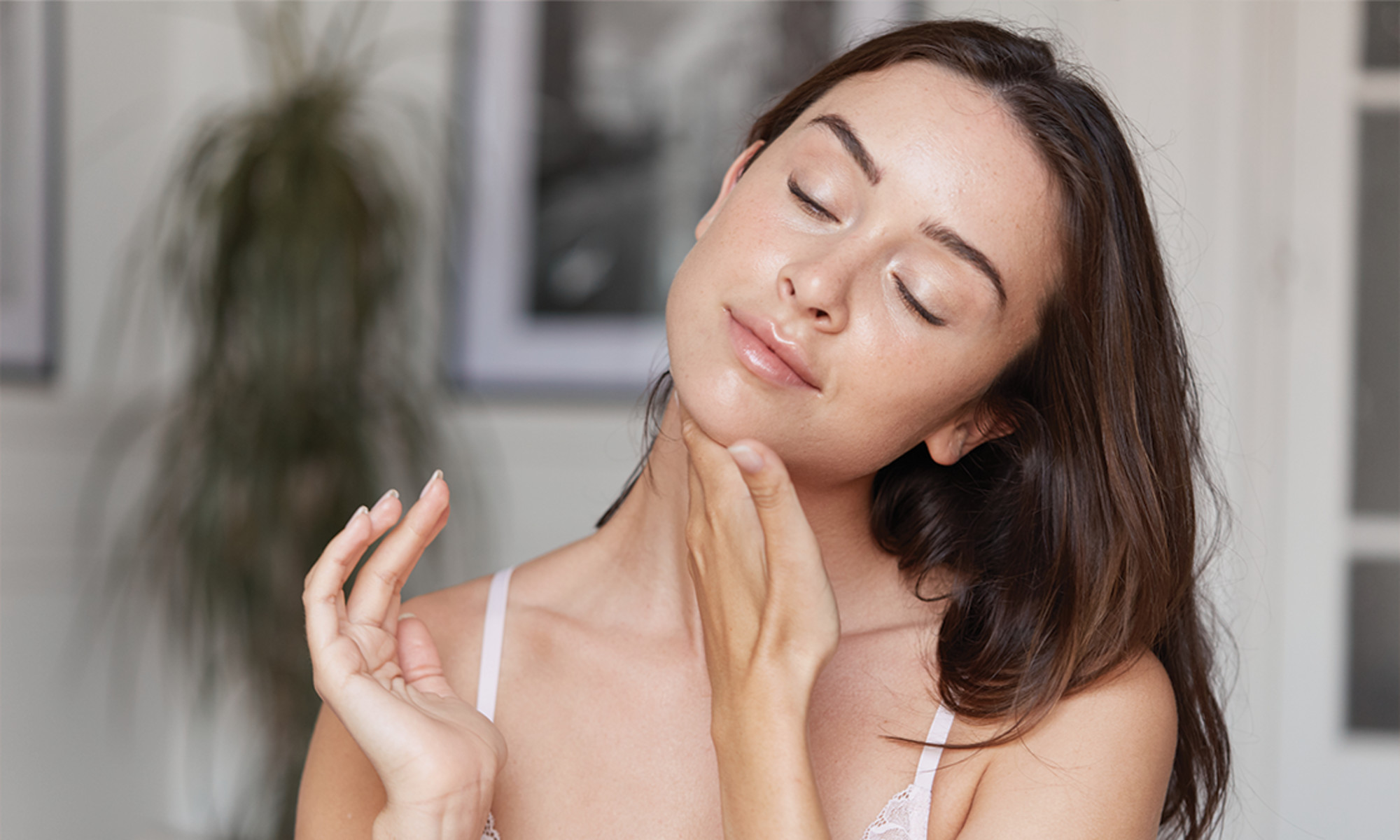Enhancing Your Yoga Practice with the Mermaid Pose
The post Enhancing Your Yoga Practice with the Mermaid Pose appeared first on The Yoga Nomads.

Besides being great for your health, practicing yoga can help you cultivate wonderful inner qualities such as grace and openness. There is no better pose to embody these characteristics than the ever-graceful mermaid pose.
Technically a variation of the traditional King Pigeon Pose (Eka Pada Rajakapotasana), Mermaid requires both strength and suppleness. It’s a test of balance, flexibility and focus that leaves you feeling like an aquatic goddess.
If you are new to this Pigeon variation, or feel your Mermaid Pose looks more like a floundering fish than an elegant sea creature, never fear! We’re here to guide you through a deep dive on this elegant asana.
Keep reading for all the tips and tricks to help perfect your Mermaid Pose.
Benefits of Mermaid Pose
Mermaid Pose, a variation of the One-Legged King Pigeon Pose, is an advanced seated posture with numerous benefits for both physical and mental well-being. The combined elements of a deep hip opener along with a backbend together produce a profound effect of release for your body, mind, and spirit.
Physical Advantages
This complex yoga pose requires strength from various muscle groups, including your core and lower back. It stretches not only the hips, but also muscles in the thighs, glutes, shoulders and chest.
Mermaid Pose primarily targets hip flexors, which is important for anyone who spends a significant amount of time sitting. Sedentary behavior — sitting at a desk or commuting in a vehicle for several hours each day — causes the hip flexors to shorten and tighten over time, directly contributing to lower back pain.

In addition to enhancing body strength and flexibility, this challenging posture promotes better coordination due to its balancing aspect. Proprioception – awareness of where our bodies are within space – is heightened by maintaining balance during this intricate and asymmetrical asana. This heightened body awareness translates into improved performance in other activities or sports you engage in outside of practicing yoga.
Mental Rewards
Apart from the physical advantages, incorporating Mermaid into your yoga routine has considerable psychological rewards too. Like many other advanced poses such as heart openers or inversions, holding difficult positions encourages focus and concentration, which can be beneficial off the mat as well.
The sense of achievement after mastering such demanding postures may boost self-esteem while at the same time cultivating patience. Gradual progress towards achieving a more advanced variations of a basic asana fosters resilience against stress encountered throughout daily life.
Spiritual Implications
In terms of spirituality, Mermaid Pose is often associated with two different chakras, or specific energy centers within our bodies. Through practicing certain yoga poses, you can repair energetic imbalances that affect your health.
For example, the deep opening action of the front body in Mermaid stimulates Svadhisthana, the second (sacral) chakra related to emotional identity, creativity, and pleasure. Moreover, the balancing involved here aligns Manipura, the third (solar plexus) chakra governing power and willpower. When you practice Mermaid pose, you are tapping into heightened self-awareness and empowerment.

Key Takeaway:
Mastering the mermaid pose in yoga can be a game-changer. It’s not just about physical strength and flexibility, but also mental focus and resilience. Plus, it could give your self-esteem a boost while aligning energy centers for heightened self-awareness.
How to Do Mermaid Pose

Now that you know all the amazing benefits of Mermaid Pose, it’s time to try it out for yourself! This pose targets your hip flexors, lower back, and arms and requires a blend of balance, strength, and flexibility. It might sound intense, but we’ve broken it down for you into a few simple steps below.
Step 1: Begin with Downward Facing Dog Pose
To make your way into Mermaid, you’ll move through a couple common yoga postures, beginning with Downward Facing Dog. Bring your body into the shape of an upside-down V, with your legs straight and hips high.
Step 2: Transitioning to Pigeon Pose
From Down Dog, bring your left knee forward towards your left wrist. Lower yourself down gently to the floor, placing your left foot behind your right wrist. Now in Pigeon, you will be seated with your left leg bent at an angle less than 90 degrees while keeping the right leg extended behind you with your back knee on the floor.
Square off your hips, drawing your left hip back and right hip forward; keeping proper alignment of the hips will ensure there’s no strain in your knees or lower back during this transitional step.
Step 3: Progress Into One-Legged King Pigeon Position
Keep your torso lifted and grow tall through the top of your head to lengthen your spine. Now, bend your back knee now, bringing your right foot up. Catch your right foot in your right hand and gently squeeze your leg in towards you, feeling your quad muscles lengthen.
Take time with this step and breathe as you go to avoid straining any part of your body.
Final Step: Embrace The Mermaid Posture
Create even more space in your spine by lifting up through your crown. Bend your right arm and shift your foot into the crook of your right elbow. Finally, reach your left arm overhead, then bend at the elbow and claps the fingers of both hands together behind your head.
Squeeze your inner thighs towards your midline to maintain balance and alignment in your hips. Open your heart towards the sky and feel the front side of your body lengthen. Hold your graceful Mermaid pose for a few steady breaths.
When you are ready, release your hands and gently lower your back foot to the floor. Make your way back to Downward Dog, and repeat Mermaid on your other side: bring your right leg forward this time, left leg back.
Remember: consistency and patience are key in achieving yoga poses such as these which require a considerable amount of flexibility.
Tips for Mastering Mermaid Pose
The following tips will guide you in your practice to master this challenging posture.
Achieving Correct Alignment
The foundation of any successful yoga pose is proper alignment. In the case of Mermaid (and Pigeon), take special care to protect your knees: your front leg should be bent at less than a 90-degree angle, rather than having your shin parallel to the short end of your yoga mat.
Your hips should be squared, facing forward on your mat as you engage your inner thighs to prevent rolling onto your back hip. Remember – maintaining good form takes precedence over attempting deeper postures too soon.
Incorporate Yoga Props
If you are still working on improving flexibility and experience difficulty entering or holding Mermaid Pose, consider using props such as blocks or straps. These aids provide additional support and stability while also helping enhance flexibility gradually. We’ve detailed how to use these props in the “Modifications” section below.
Breathe Deeply And Embrace Relaxation
Maintaining breath awareness when practicing yoga is essential; you will remain relaxed and calm while working towards more complex postures like Mermaid Pose. Try inhaling deeply before stretching, then exhale slowly as you transition further into each position; this technique enhances both physical performance and mental focus, especially in challenging postures like Mermaid.
Patient Practice: A Key Ingredient
Maintain patience: allow yourself to experience the process of progression without rushing yourself in order to avoid injury. Consistent practice fosters body awareness along with improving strength and flexibility for advanced moves. This includes not only your journey to mastering a specific pose, but your practice as a whole. Incorporating appropriate warm-up poses will set you up for success in more challenging postures like Mermaid. A patient approach ensures every session remains an opportunity to progress, rather than leading to frustration due to stagnant routines and unrealistic expectations.Key Takeaway:
Nailing the mermaid pose in yoga isn’t just about flexibility, it’s a blend of strength, balance and proper alignment. Use props for support if needed, breathe deeply to relax muscles and remember – patience is key. Consistent practice with preparatory poses will gradually enhance your skills.
Common Mistakes in Mermaid Pose
Mermaid Pose is known for its beauty and complexity. Yet even seasoned yoga practitioners can sometimes make these common mistakes that potentially hinder their progress or lead to injuries.
Misalignment of Hips
An often-observed mistake during this seated pose is improper alignment of hips. Ideally, your hips should be squared with the front edge of your yoga mat while executing this asana. Misaligned hips not only disrupt balance but also place undue strain on the lower back and hips.
Rushing Into The Final Position
Ambition might prompt some yogis to force their back foot towards their head prematurely, which can result in injury. Remember that every individual’s body has a unique structure and level of flexibility; be sure to listen to your own body, as gradual improvement over time leads to safely achieving the final pose.
Neglecting Breath Awareness
Breath control is an integral part of any successful yoga practice which can often be overlooked amidst challenging postures like Mermaid. Focused breathing helps relax muscles, making them more receptive to deep stretches, in addition to maintaining concentration throughout the execution of the posture. Maintain steady inhales and exhales throughout all phases, including entering and exiting Mermaid Pose.

Modifications for Mermaid Pose
If the mermaid pose seems daunting, there are several modifications that can make this yoga practice more accessible and enjoyable. You can make sure you’re fully prepared to modify any yoga pose by picking up a set of blocks and a yoga strap, such as this one from Gaiam.
Introducing Yoga Blocks or Blankets
The hip flexors or lower back may feel strained when performing the full expression of a mermaid pose. To alleviate such discomforts, consider incorporating yoga blocks. By placing one under your sitting bones to elevate your hips slightly above the floor, you ease pressure on the affected areas while maintaining alignment in seated asymmetrical poses like this.

You may use a yoga blanket in a similar fashion, placing the folded blanket underneath your legs to slightly elevate your hips and provide cushion.
Using a Yoga Strap

If you have tight quad muscles, it will be difficult to bend your back leg enough to catch your foot. Likewise, if you have a stiff back or are recovering from a spinal injury, the backbend element of Mermaid Pose may prevent you from connecting your back foot to your elbow.
In this case, you can use a yoga strap. Simply loop one end of the strap around the top of your foot; then, reach behind you with your arm on that same side to hold the strap (if your left leg is bent behind you, grab the strap with your left hand). Your opposite arm can extend towards the sky to practice balance, or your fingertips may stay on the floor beside you for more stability.
Modified Arm Position
The arm position in Mermaid Pose requires your shoulders to be quite open. For those with limited mobility in the shoulder joint, achieving the final position where the left arm reaches behind to clasp the right hand (as described in the instructions above) might not be accessible.
Instead, keep both arms overhead with your palms touching as you gaze forward. Or, hold your back foot with one hand as your opposite arm reaches skyward.

Key Takeaway:
Mastering Mermaid Pose can be a breeze with some handy modifications. Use yoga blocks or a blanket to ease hip and lower back strain, use a strap to accommodate tight quads, or charge your arm position to maintain comfort in your shoulders. Remember – listen to your own body and adapt to your specific needs.
Teaching Mermaid Pose
The role of yoga teachers is crucial in guiding students through the complexities of advanced pose variations like Mermaid. Here are some helpful instructional tips for yoga teachers who plan to include Mermaid Pose in their yoga classes.
Guiding Through Steps
To start, have your students transition from the Downward Facing Dog to Pigeon Pose. Their left knee should be forward on their yoga mat while keeping the back leg straight. The alignment and angle of the front foot are vital for stability and safety in the knee joint.
Instruct them next to lift their left arm overhead, bending at the elbow, and then reach behind with the right hand aiming for finger touch or clasp. If they experience discomfort in the lower back or shoulders, remind them not to force this movement.
Safety Measures
Preventing injuries during yoga classes, especially in complex poses like Mermaid, involves maintaining square hips rather than twisting or slumping towards the side, which can strain muscles unnecessarily. Emphasize engaging the core and inner thighs throughout the practice as it provides support for the low back and hips.
If balance seems challenging or mobility is limited, suggest using props such as a block or blanket under the hips or a strap around the back foot until they develop the necessary strength and flexibility required by this posture.
Cues & Adjustments
Your verbal cues play an important part when teaching intricate postures like Mermaid. Use clear, direct phrases like “squeeze your inner thighs towards your midline” and “extend the spine upwards starting from the tailbone”. For physical adjustments, always seek consent before gently guiding movements without forcing the body beyond its natural range limits.
Preparatory Poses for Mermaid Pose
The path to perfecting Mermaid Pose requires a careful progression through several preparatory poses. These foundational yoga postures can help open your hips, enhance flexibility in your lower back and shoulders, and improve balance.
Pigeon Pose

One-legged King Pigeon Pose — or simply just Pigeon Pose, as it’s often known — is an excellent initial step on this journey. This seated posture helps open up the hips while stretching the thighs, groin area, psoas muscles (deep core muscles connecting the spine to the legs), and piriformis muscles (muscles deep within the gluteal region).
Downward Facing Dog Pose

A crucial part of many yoga classes, including those focusing on Mermaid preparation, is Downward Facing Dog Pose. It offers a full-body stretch while lengthening the spine – key elements for maintaining proper alignment during back-bending like Mermaid.
Lunge Variations

Incorporating various lunges can be beneficial for loosening tight hip flexors before practicing Mermaid Pose. Start from Downward Dog, stepping forward with the left foot between the hands, keeping the right knee grounded on your mat and the top of the back foot on the floor, forming a low lunge. Progressively transition towards a high lunge with the front knee bent at a 90-degree angle and the back leg straight; tuck your toes and stack your back heel over the toes of the back foot.
Cobra or Upward-Facing Dog Pose

To build the upper body strength necessary for challenging positions like the mermaid, consider adding Cobra or Upward Facing Dog poses to your routine. Both of these poses strengthen the shoulder girdle, open the chest, and enhance spinal agility – critical components needed for any backbend, including the graceful yet sturdy Mermaid Pose.
Key Takeaway:
Perfecting Mermaid Pose is a journey, starting with foundational poses to open hip flexors and enhance flexibility. Pigeon, Downward Facing Dog, lunge variations, and Cobra or Upward-Facing Dog poses can help you build strength, balance, and flexibility for this complex position.
Counter Poses for Mermaid Pose
The practice of yoga poses requires balance, and this includes practicing counter poses after executing an intense pose like Mermaid. Here are two wonderfully relaxing postures that can restore equilibrium in your body.
Seated Forward Bend Pose

Pashchimottanasana or Seated Forward Bend Pose, effectively serves as restorative posture following a challenging pose such as Mermaid. It allows you to gently stretch your lower back muscles which were actively used while arching into your advanced Mermaid variation. Furthermore, its calming properties encourage introspection – creating mental stability post-practice.
Child’s Pose

Balasana or Child’s Pose is a classic grounding posture which serves well here too as it releases whole-body tension by allowing complete relaxation while connecting with your breath. This simple yet potent asana notably relieves any tightness around the neck and shoulder area caused by the arm positioning during Mermaid. Moreover, it soothes down the nervous system thus restoring perfect harmony from the inside out.
Mermaid Pose FAQs
What is Mermaid Pose good for?
Mermaid Pose improves flexibility, enhances balance, opens the hips and shoulders, and promotes self-awareness.
Why is Mermaid Pose so hard?
Mermaid Pose can be challenging due to its demand on hip flexibility, core strength, spinal and shoulder mobility, and balance. It requires practice and patience to master.
What is Mermaid vs Pigeon Pose?
Pigeon focuses primarily on hip-opening while Mermaid adds an element of backbend and shoulder stretch, making it more advanced.
Final Thoughts
Mastering Mermaid Pose is a journey of balance, flexibility, and focus. With its myriad benefits for both body and mind, it’s an asana worth pursuing. With this intensive guide, you have all the information needed to confidently practice this elegant asana!
Join us at The Yoga Nomads, where we blend spirituality with athleticism. Explore chakras, meditation, crystals along with athletic apparel and equipment that complements every move you make on the mat. Whether you’re advancing your yoga practice or exploring new realms of spiritual wellness, we’ve got everything needed to enhance your journey towards holistic health.

 Hollif
Hollif 































